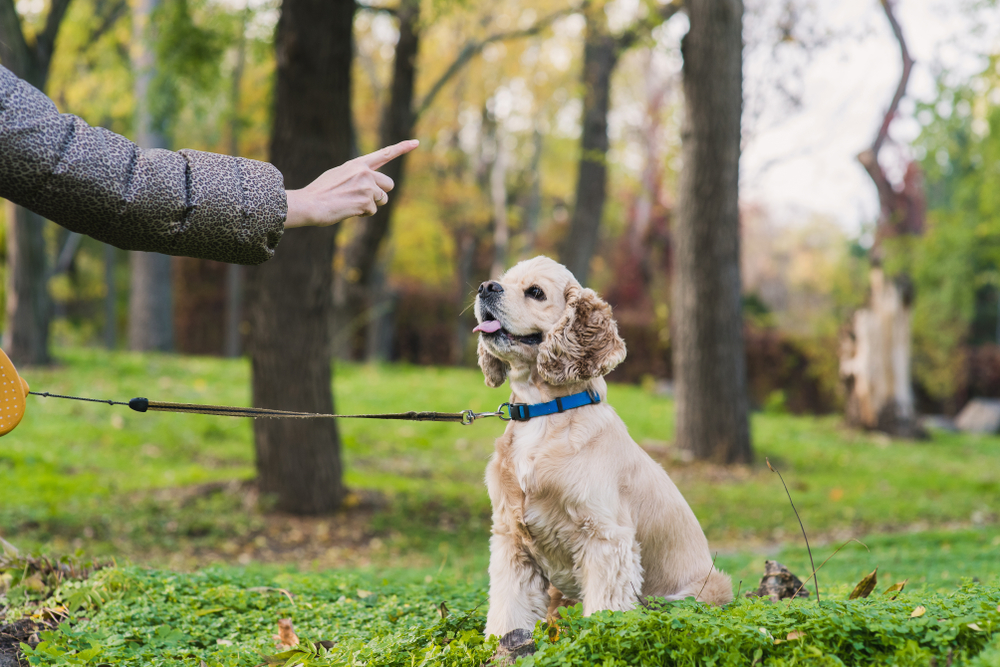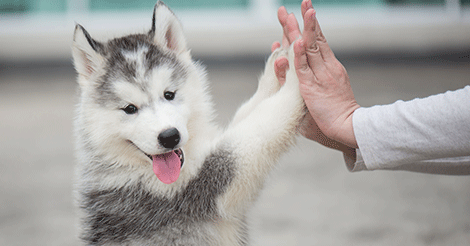Puppy Training Techniques: Teaching Basic Commands for a Happy Pet
Puppy Training Techniques: Teaching Basic Commands for a Happy Pet
Blog Article
Leading Puppy Training Methods to Make Sure a Mannerly Pet Dog
Efficient puppy training is crucial for growing a mannerly companion, and various strategies can considerably affect a pet dog's development. As we check out these approaches further, it becomes clear that the success of puppy training hinges on a mix of strategies that can change your pet's behavior in remarkable means.
Favorable Reinforcement Methods
Utilizing positive reinforcement methods is essential for reliable pup training, as it motivates desired behaviors via benefits as opposed to penalty. This technique takes advantage of the all-natural learning procedures of pets, enhancing etiquette by offering immediate and tangible benefits, such as deals with, appreciation, or playtime. By connecting positive outcomes with certain actions, pups are more probable to repeat those habits in the future.
Effective favorable reinforcement entails timing and uniformity. Benefits should be given promptly after the preferred actions strikes create a clear connection in the pup's mind. In addition, varying the kinds of rewards can keep a young puppy's rate of interest and inspiration throughout the training process. For instance, some young puppies may react far better to verbal appreciation while others may choose a favorite toy or reward.

Uniformity in Educating Commands
Preserving consistency in training commands is vital for enhancing the lessons discovered with positive reinforcement techniques. Dogs flourish on regular and predictability, so making use of the exact same spoken commands and hand signals for particular habits is essential. This uniformity helps young puppies comprehend what is expected of them, decreasing confusion and frustration for both the pet and the fitness instructor.

Timing additionally plays a substantial role in consistency. Commands need to be delivered immediately throughout training sessions and adhered to right away by favorable support, such as deals with or appreciation. This immediate response aids strengthen the association between the command and the desired habits.
Incorporating consistency into training sessions will certainly create a secure learning environment, promoting quicker mastery of commands. Ultimately, a well-structured approach promotes a strong bond in between the puppy and its owner, resulting in a more mannerly and obedient animal.
Socialization With Other Pets
Socialization with various other pet dogs is crucial for a puppy's growth, as it helps them learn ideal actions and communication abilities in diverse social contexts. Very early communications with different pets can substantially affect a young puppy's personality and flexibility in numerous situations. When puppies are exposed to a range of family pets, they become a lot more certain and much less frightened, which can protect against prospective behavioral issues later in life.

Show your pup to acknowledge signals from other pets, such as signs of playfulness or discomfort, fostering common respect and understanding. Normal socializing not just improves your puppy's social abilities yet additionally adds to their overall well-being, producing a much more harmonious living setting.
Cage Training Benefits
Acknowledging the countless advantages official source of cage training can significantly boost both the pup's and proprietor's experience. Crate training offers a risk-free and protected environment for puppies, guaranteeing they feel safeguarded when laid off. This feeling of security can dramatically lower anxiousness and tension levels for both the owner and the pet dog.
Additionally, crates act as a beneficial housebreaking device. Pups naturally stay clear of dirtying their sleeping location, thus motivating them to hold their bladder until they are let outside. This impulse can speed up the house-breaking procedure, promoting excellent habits beforehand.
Crate training additionally assists in managing a puppy's actions when unsupervised. By providing a designated area, owners can prevent destructive behaviors, such as eating on furnishings or getting involved in damaging materials. Furthermore, cages can be advantageous during travel, providing a familiar room that can assist relax a pup in new atmospheres.
Last but not least, developing a cage routine urges self-reliance, allowing pups to discover just how to be alone without fear. Overall, crate training is a reliable technique for advertising self-control, serenity, and security, causing a well-adjusted, well-behaved pet.
Chain Training Basics
Leash training is an essential facet of responsible pet possession that guarantees a safe and satisfying walking experience for both the young puppy and its owner. Proper leash training starts early, ideally during the pup's socializing period. This training assists develop great routines and promotes positive habits when out in public.
To start, pick a comfortable collar or harness that fits your puppy well. Connect a sturdy chain, guaranteeing it is not too long, as this can cause drawing and irregular actions. Beginning in a silent atmosphere to minimize interruptions and progressively introduce your pup to new environments.
Use favorable support strategies, such as treats and appreciation, to encourage your pup to i thought about this walk close to you. Stop strolling and wait for them to return to your side before continuing if your puppy draws. This shows them that drawing will certainly not produce onward motion. Consistency is essential; practice on a regular basis and continue to be individual, as proficiency takes time.
Furthermore, integrate brief training sessions with enjoyable distractions to construct your pup's focus. With dedication and persistence, leash training will certainly result in a hospitable companion, making walks delightful for both the pup Get the facts and the owner.
Conclusion
Finally, utilizing reliable pup training methods is crucial for developing a well-behaved family pet. Favorable reinforcement cultivates trust fund and encourages desired habits, while consistency in commands aids in comprehension. Socializing with various other animals improves flexibility and social skills, and pet crate training provides a safe and secure atmosphere that supports house-training efforts. Chain training establishes appropriate walking practices, contributing to pleasurable outings. Generally, these methods jointly promote a harmonious relationship between puppies and their proprietors.
As we explore these methods even more, it comes to be clear that the success of puppy training hinges on a combination of approaches that can transform your pet's habits in exceptional ways.
Using favorable reinforcement methods is vital for effective young puppy training, as it motivates preferred actions with benefits instead than penalty.Crate training likewise aids in managing a puppy's behavior when not being watched.Leash training is a basic facet of accountable pet dog ownership that makes certain a pleasurable and risk-free strolling experience for both the young puppy and its proprietor.In final thought, using reliable pup training methods is important for developing a mannerly pet dog.
Report this page